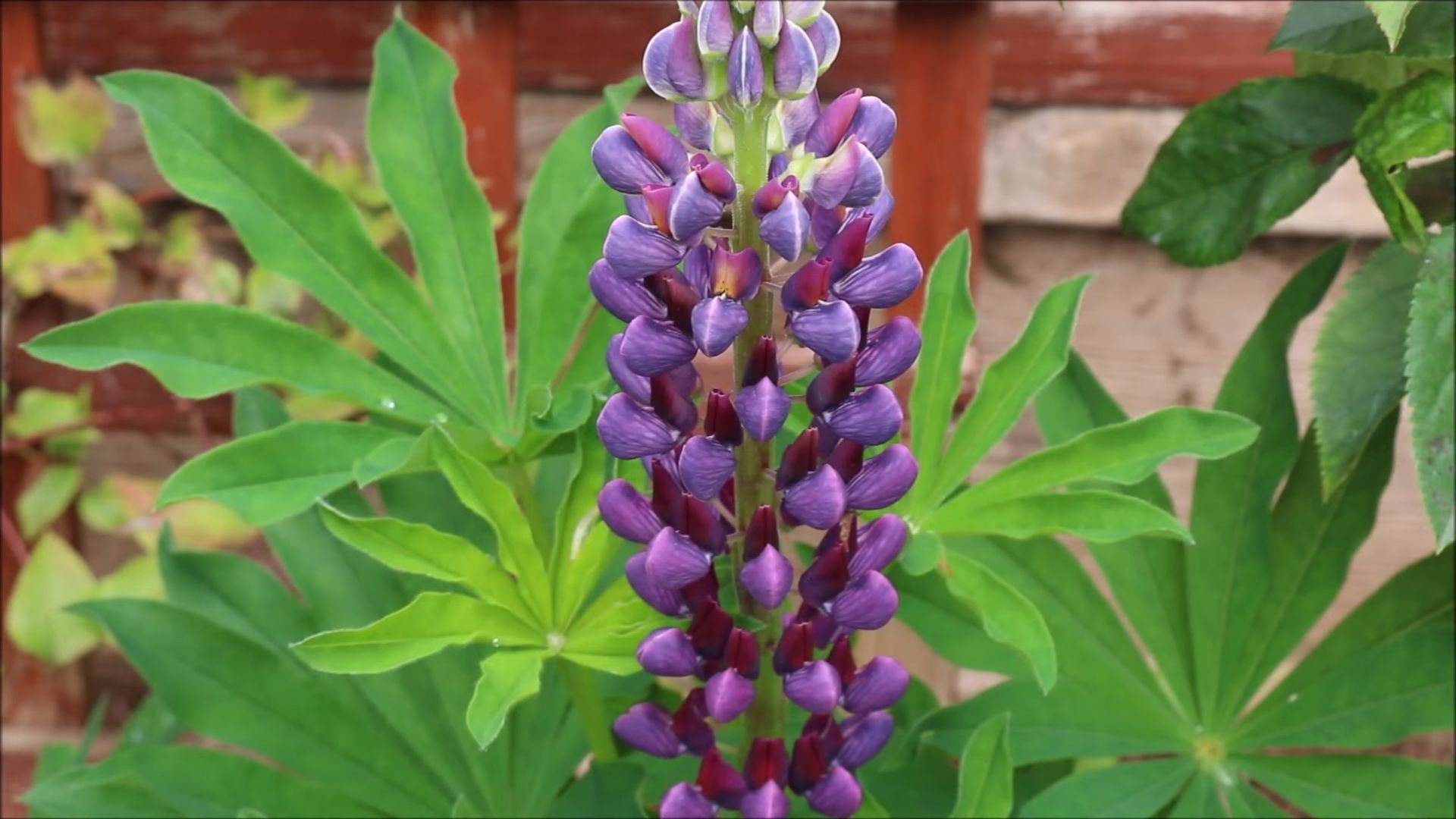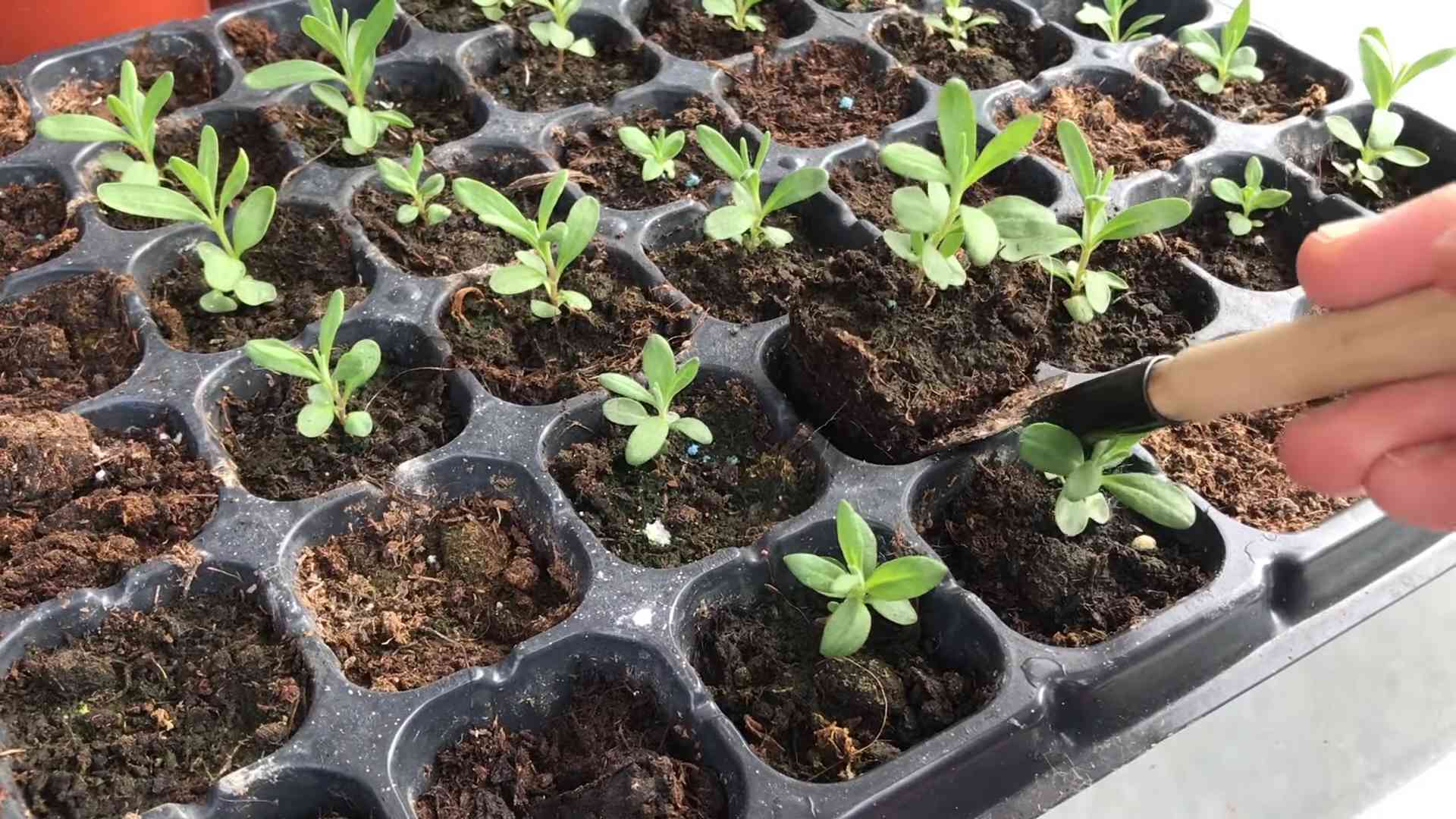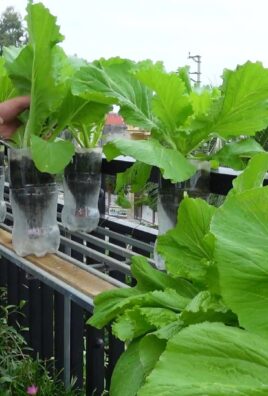Growing Lupins from Seed can seem daunting, but trust me, it’s incredibly rewarding! Imagine your garden bursting with vibrant, towering spires of lupins, all thanks to your own green thumb. This isn’t just about planting flowers; it’s about creating a stunning display of colour and texture that will be the envy of your neighbours.
Lupins have a rich history, dating back to ancient times when they were cultivated as a food source. While we primarily admire them for their beauty today, their resilience and adaptability remain a testament to their enduring appeal. From cottage gardens to grand estates, lupins have graced landscapes for centuries, adding a touch of whimsical elegance.
Why should you learn this DIY trick? Well, buying mature lupin plants can be expensive. Growing Lupins from Seed allows you to cultivate a larger, more diverse collection for a fraction of the cost. Plus, there’s something incredibly satisfying about nurturing a plant from its very beginning. I’m going to show you some simple hacks that will dramatically increase your success rate, even if you’re a complete beginner. We’ll cover everything from seed preparation to transplanting, ensuring you have a garden full of thriving lupins in no time. Get ready to unleash your inner gardener!

Growing Lupins from Seed: A Comprehensive DIY Guide
Hey there, fellow gardening enthusiasts! I’m so excited to share my tried-and-true method for growing lupins from seed. These beauties are a fantastic addition to any garden, adding vibrant color and attracting pollinators. Plus, starting them from seed is surprisingly easy and rewarding. Let’s dive in!
Choosing Your Lupin Varieties
Before we get our hands dirty, let’s talk about lupin varieties. There are tons of options out there, from the classic Russell hybrids to dwarf varieties perfect for containers. Consider these factors when choosing:
* Color: Lupins come in a rainbow of colors, including pink, purple, blue, yellow, white, and even bi-colors. Pick shades that complement your existing garden palette.
* Height: Russell hybrids can reach impressive heights (up to 4 feet!), while dwarf varieties stay much smaller (around 1-2 feet). Choose a height that suits your garden space.
* Hardiness: Make sure the variety you choose is suitable for your climate. Lupins generally prefer cooler climates.
* Perennial vs. Annual: Most lupins are perennials, meaning they’ll come back year after year. However, some annual varieties are available.
Some popular varieties include:
* Russell Hybrids (mixed colors)
* ‘Gallery Series’ (dwarf, mixed colors)
* ‘Noble Maiden’ (white)
* ‘Chandelier’ (yellow)
* ‘Blue Shades’ (blue)
Preparing for Planting
Okay, now that you’ve chosen your lupin seeds, let’s get ready for planting. This involves a few key steps:
1. Seed Scarification: Lupin seeds have a tough outer coating that can make germination difficult. Scarification helps to break down this coating and allows water to penetrate. There are a few ways to scarify lupin seeds:
* Nicking: Gently nick the seed coat with a sharp knife or nail file. Be careful not to damage the inside of the seed!
* Sanding: Rub the seeds gently with sandpaper.
* Soaking: Soak the seeds in warm water for 24 hours. This can also help soften the seed coat.
I personally prefer the soaking method, as it’s the least likely to damage the seeds.
2. Choosing Your Planting Medium: Lupins prefer well-draining soil. You can use a commercial seed-starting mix or make your own by combining equal parts peat moss (or coconut coir), perlite, and vermiculite.
3. Selecting Your Containers: You can start lupin seeds in seed trays, small pots, or even recycled containers like yogurt cups. Just make sure the containers have drainage holes.
Sowing the Seeds
Alright, let’s get those seeds in the ground (or, well, in the container)!
1. Fill Your Containers: Fill your chosen containers with your seed-starting mix, leaving about half an inch of space at the top.
2. Moisten the Soil: Gently water the soil until it’s evenly moist but not soggy.
3. Sow the Seeds: Sow the seeds about 1/4 to 1/2 inch deep. I usually plant 2-3 seeds per container, just in case some don’t germinate.
4. Cover the Seeds: Lightly cover the seeds with more seed-starting mix.
5. Water Gently: Water the seeds gently to avoid disturbing them. A spray bottle works well for this.
6. Label Your Containers: Don’t forget to label your containers with the variety of lupin you’re planting and the date. Trust me, you’ll thank yourself later!
Germination and Early Care
Now comes the waiting game! Lupins typically germinate in 7-21 days, depending on the temperature and variety. Here’s what you need to do during this time:
1. Maintain Moisture: Keep the soil consistently moist but not soggy. Check the soil daily and water as needed.
2. Provide Warmth: Lupins germinate best in temperatures between 60-70°F (15-21°C). You can use a heat mat to provide bottom heat if needed.
3. Provide Light: Once the seedlings emerge, they’ll need plenty of light. Place them in a sunny windowsill or under grow lights. If using a windowsill, rotate the containers regularly to prevent the seedlings from leaning towards the light.
4. Thin Seedlings: If you planted multiple seeds per container and all of them germinate, you’ll need to thin them out. Choose the strongest seedling and snip off the others at the soil line. Don’t pull them out, as this can disturb the roots of the remaining seedling.
Transplanting Your Lupin Seedlings
Once your lupin seedlings have developed a few sets of true leaves (the leaves that look like miniature versions of the adult leaves), they’re ready to be transplanted into larger pots or directly into the garden.
Transplanting into Larger Pots
If you’re not ready to plant your lupins in the garden yet, you can transplant them into larger pots. This will give them more room to grow and develop a stronger root system.
1. Choose Your Pots: Select pots that are at least 4 inches in diameter.
2. Fill the Pots: Fill the pots with a good-quality potting mix.
3. Gently Remove the Seedlings: Carefully remove the seedlings from their original containers. Be gentle to avoid damaging the roots.
4. Plant the Seedlings: Plant the seedlings in the new pots, making sure the top of the root ball is level with the soil surface.
5. Water Thoroughly: Water the seedlings thoroughly after transplanting.
Transplanting into the Garden
If you’re ready to plant your lupins in the garden, choose a location that receives full sun to partial shade and has well-draining soil.
1. Harden Off the Seedlings: Before transplanting your lupins into the garden, you’ll need to harden them off. This means gradually exposing them to outdoor conditions over a period of 7-10 days. Start by placing them in a sheltered spot outdoors for a few hours each day, gradually increasing the amount of time they spend outside.
2. Prepare the Planting Site: Dig holes that are slightly larger than the root balls of your seedlings. Space the holes about 1-2 feet apart, depending on the variety of lupin you’re planting.
3. Amend the Soil: If your soil is poor, amend it with compost or other organic matter.
4. Gently Remove the Seedlings: Carefully remove the seedlings from their pots.
5. Plant the Seedlings: Plant the seedlings in the prepared holes, making sure the top of the root ball is level with the soil surface.
6. Water Thoroughly: Water the seedlings thoroughly after transplanting.
7. Mulch: Apply a layer of mulch around the plants to help retain moisture and suppress weeds.
Ongoing Care
Once your lupins are planted, they’ll need regular care to thrive. Here are a few tips:
1. Watering: Water your lupins regularly, especially during dry spells. They prefer consistently moist soil, but avoid overwatering, as this can lead to root rot.
2. Fertilizing: Lupins don’t need a lot of fertilizer. In fact, too much fertilizer can actually harm them. If your soil is poor, you can apply a light feeding of a balanced fertilizer in the spring.
3. Deadheading: Deadhead spent flowers to encourage more blooms. Simply snip off the flower stalks just below the lowest flower.
4. Staking: Tall lupin varieties may need staking to prevent them from flopping over. Use bamboo stakes or other supports to keep them upright.
5. Pest and Disease Control: Lupins are generally pest- and disease-resistant, but they can be susceptible to aphids, slugs, and powdery mildew. Inspect your plants regularly and take action if you notice any problems. Aphids can be controlled with insecticidal soap, slugs can be controlled with slug bait, and powdery mildew can be controlled with a fungicide.
6. Winter Care: In colder climates, lupins may need winter protection. Apply a layer of mulch around the base of the plants to protect the roots from freezing. You can also cut back the foliage in the fall.
Enjoying Your Lupins
And that’s it! With a little care and attention, you’ll be rewarded with beautiful, vibrant lupins that will brighten up your garden for years to come. I love cutting the flower spikes and bringing them indoors to enjoy in bouquets. They also attract bees and butterflies to the garden, which is always a plus!
Happy gardening! I hope this guide helps you grow your own stunning lupins from seed. Let me know if you have any questions!

Conclusion
So, there you have it! Growing lupins from seed isn’t just a cost-effective way to fill your garden with these stunning spires of color; it’s a deeply rewarding experience. From the initial anticipation of germination to the triumphant display of blooms, each stage offers a connection to nature that’s hard to replicate.
Why is this DIY trick a must-try? Because it empowers you to cultivate a vibrant lupin display tailored to your exact preferences. You’re no longer limited by the selection available at your local garden center. You get to choose the specific colors, varieties, and even the timing of your blooms. Plus, there’s an undeniable satisfaction in knowing you nurtured these beauties from tiny seeds.
But the benefits extend beyond aesthetics. Lupins are nitrogen-fixing plants, meaning they enrich the soil around them, benefiting other plants in your garden. They also attract pollinators, contributing to a healthier and more vibrant ecosystem. By growing lupins from seed, you’re not just adding beauty; you’re actively improving your garden’s overall health.
Ready to take your lupin game to the next level? Consider these variations:
* **Succession Planting:** Sow seeds every few weeks to extend the blooming season. This ensures a continuous display of color throughout the summer.
* **Color Blends:** Experiment with different color combinations. Mix and match seeds to create unique and eye-catching displays.
* **Container Gardening:** Lupins can also thrive in containers, making them perfect for balconies or patios. Choose a large pot with good drainage and use a high-quality potting mix.
* **Companion Planting:** Plant lupins alongside other plants that benefit from nitrogen-rich soil, such as tomatoes or beans.
Don’t be intimidated by the process. While it requires a bit of patience and attention, growing lupins from seed is surprisingly straightforward. Remember to provide well-drained soil, adequate sunlight, and consistent moisture. And don’t forget to protect your seedlings from slugs and snails!
We’re confident that you’ll find this DIY trick to be a game-changer for your garden. The vibrant colors, the ecological benefits, and the sheer satisfaction of nurturing these plants from seed make it an experience you won’t soon forget.
So, grab your seeds, prepare your soil, and get ready to witness the magic of lupins unfold. We can’t wait to hear about your experiences! Share your photos, tips, and stories in the comments below. Let’s create a community of lupin lovers and inspire others to embrace the joy of growing these magnificent flowers from seed. Let us know if you have any questions about **growing lupins from seed**!
Frequently Asked Questions (FAQ)
What is the best time to sow lupin seeds?
The ideal time to sow lupin seeds depends on your climate. In general, you can sow them in early spring (March-April) for summer blooms, or in late summer/early autumn (August-September) for blooms the following year. Autumn sowings often result in stronger plants that are better equipped to withstand the summer heat. If you live in an area with mild winters, autumn sowing is generally preferred. For spring sowing, start seeds indoors 6-8 weeks before the last expected frost.
Do I need to soak lupin seeds before planting?
Yes, soaking lupin seeds before planting is highly recommended. Lupin seeds have a hard outer coating that can inhibit germination. Soaking them in warm water for 12-24 hours helps to soften this coating and allows moisture to penetrate, significantly improving germination rates. You can also gently scarify the seeds by rubbing them lightly with sandpaper or nicking them with a knife to further aid water absorption. Be careful not to damage the inner seed.
What type of soil is best for lupins?
Lupins prefer well-drained soil that is slightly acidic to neutral (pH 6.0-7.0). They don’t thrive in heavy clay soils, as these can become waterlogged and lead to root rot. If your soil is heavy, amend it with plenty of organic matter, such as compost or well-rotted manure, to improve drainage and aeration. Avoid soils that are excessively alkaline, as this can also hinder their growth.
How much sunlight do lupins need?
Lupins need at least six hours of sunlight per day to thrive. They can tolerate some partial shade, especially in hotter climates, but they will produce fewer flowers if they don’t receive enough sunlight. Choose a location in your garden that receives full sun for the best results.
How often should I water lupins?
Lupins need consistent moisture, especially during germination and early growth. Water them regularly, especially during dry spells. However, avoid overwatering, as this can lead to root rot. Allow the soil to dry out slightly between waterings. Once established, lupins are relatively drought-tolerant.
Are lupins susceptible to any pests or diseases?
Yes, lupins can be susceptible to certain pests and diseases. Common pests include slugs, snails, aphids, and lupin aphids. Slugs and snails can be particularly damaging to young seedlings, so take measures to protect them, such as using slug pellets or beer traps. Aphids can be controlled with insecticidal soap or by introducing beneficial insects, such as ladybugs. Common diseases include powdery mildew and root rot. Powdery mildew can be prevented by ensuring good air circulation and avoiding overhead watering. Root rot is caused by overwatering, so ensure your soil is well-drained.
How do I deadhead lupins?
Deadheading lupins is essential for encouraging further blooms. Once the flowers on a spike have faded, cut the entire spike back to the base of the plant. This will encourage the plant to produce new flower spikes. You can also leave some of the spent flower spikes to develop seed pods if you want to collect seeds for future planting.
Can I grow lupins in containers?
Yes, lupins can be grown in containers, but you’ll need to choose a large pot with good drainage. Use a high-quality potting mix and ensure the container receives plenty of sunlight. Water regularly and fertilize every few weeks with a balanced fertilizer. Container-grown lupins may need more frequent watering than those grown in the ground.
Are lupins perennial or annual?
Lupins are generally considered to be short-lived perennials. They typically live for 3-5 years. However, they can be easily propagated from seed, so you can ensure a continuous supply of lupins in your garden.
Are lupins poisonous?
Yes, all parts of the lupin plant are poisonous if ingested. They contain alkaloids that can cause nausea, vomiting, and abdominal pain. Keep lupins away from children and pets. While some varieties are bred to be edible, it’s crucial to properly prepare them to remove the toxins. It’s best to err on the side of caution and avoid consuming any part of the lupin plant unless you are absolutely certain of its edibility and preparation methods.





Leave a Comment